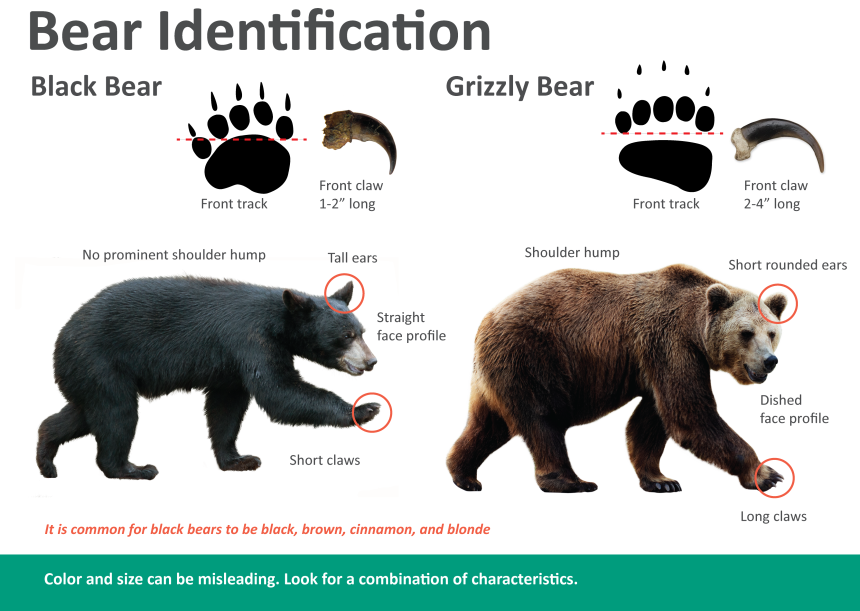Hunters in certain GMUs are required to successfully complete the WDFW bear identification test, or equivalent test from another state, to avoid potential misidentification of grizzly bears by black bear hunters. The bear ID test is required in GMUs 101, 105, 108, 111, 113, 117, 121, 203, 204, 209, 215, 218, 224, 231, 242 - 244, 418, 426, 437, and 450 and you must carry proof of successful completion. The bear identification test is now available in WDFW's WILD system. Hunters must login with their username and password and click the "Mandatory Species Identification Tests" link.
Hunters who purchase their bear license and tag will need to take the test if they choose to hunt in the identified GMUs.

Washington is home to both grizzly bears and black bears. Grizzly bears are rare in Washington, but there is a small population in the Selkirk Mountains of northeast Washington, and their presence has been documented in the Okanogan Highlands and the North Cascades. Watch our video about identifying grizzly bears versus black bears in the field.
Black bears, meanwhile, are abundant in the west, northeast and the Blue Mountains in southeast Washington. Based on the latest data, WDFW estimates that there are approximately 22,000 black bears in Washington across all land ownerships. This estimate accounts for all ages of black bears, including cubs. Black bears are a game species and are hunted annually.
Grizzly bears are a federally threatened and state-listed endangered species. Killing one, either unintentionally or intentionally, can bring extremely costly fines and penalties. As with other similar-looking game species such as elk, moose, caribou, mule deer, and white-tailed deer, Washington hunters are responsible for being able to tell the difference between black and grizzly bears. This knowledge and skill is especially important in areas where the ranges of these two bear species overlap.
Bear identification: male vs. female
It is illegal to shoot a cub, or a female with cubs. During the fall season, females may be accompanied by cubs weighing 30-50 lbs. Cubs tend to lag behind when traveling, so please observe and be patient before shooting. Watch the video below to learn more about identifying the sex of a black bear while hunting.
Bear identification test
The bear identification test has been approved by the Fish and Wildlife Commission and is now available in the WILD system. Hunters must login with their username and password and click the "Mandatory Species Identification Tests" link.
Hunters who purchase their bear license and tag will need to take the test if they choose to hunt in the identified GMUs.
Special thanks to the Interagency Grizzly Bear Committee (IGBC) for creating this bear identification program. The IGBC was created in 1983 to lead the effort to recover the grizzly bear in the lower 48 states.
BeBearAware.org Videos
Grizzly Bear – Black Bear Identification
In areas where both black bears and grizzly bears occur, it is critical for black bear hunters to be able to distinguish between black and grizzly bears before shooting. Grizzly bears are an endangered species, and killing one (inadvertently or intentionally) will result in extremely costly fines and penalties. This video, produced by BeBearAware shows how to tell if a bear is a grizzly or a black bear. Hunters are encourage to also take the bear identification course and quiz located above.
Hunting in Bear Country
Produced by the Center for Wildlife Information’s BeBearAware campaign (BeBearAware.org) , this 12-minute movie gives important advice for all users who recreate in areas where bears may occur. How to tell the difference between the common black bear and the rare grizzly bear, proper food storage techniques near camps, how to recognize bear sign, likely places for bears to occur, and how to avoid encounters are all covered in this production.